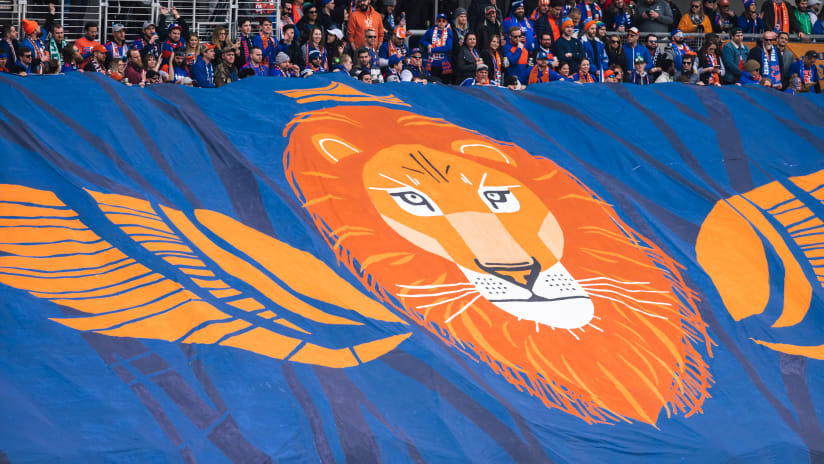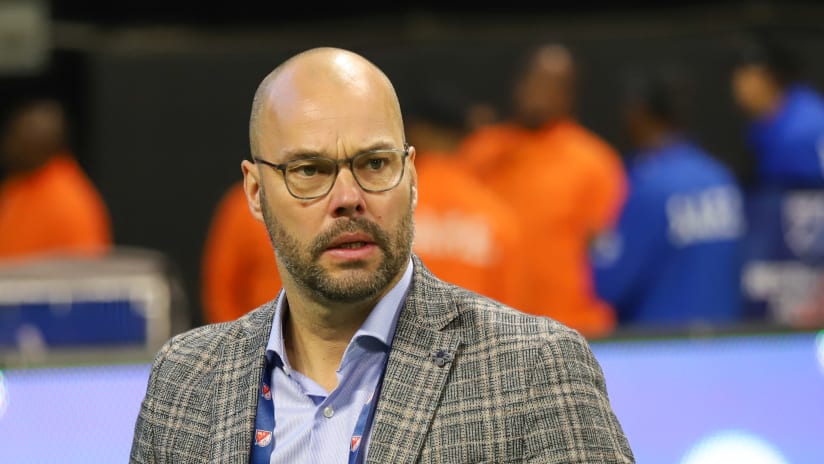Welcome to “Down The Hatch,” a weekly mailbag about FC Cincinnati and their time in MLS. This is Charlie Hatch, the club’s Digital Host and Writer.
Questions can be submitted here or on Twitter by tweeting to @charliehatch_.
Thank you for the questions and feel free to send more!
Eric: How could I join the academy for this club?
Deng: How can I have a trial for the academy if I didn’t get an invite?
FC Cincinnati held tryouts this past week for two teams: the Under-15s and Under-16/17s. Invitations for those teams will be extended within the next week. Those players will form the base of the team but there is still some scouting in the local region to do and the Academy staff expects to add a few more players to both teams over the next couple of months.
Hopeful Fan: Will we be seeing more of Nazmi Albadawi? We don’t seem to have an out-and-out number 10 in the lineup usually, what’s your take?
This question was submitted before FCC sent Albadawi on loan to North Carolina FC, but the second half of this question is important to answer.
The No. 10 role – the center-attacking midfielder – was prevalent earlier this season. In the first match, Corben Bone was the 10 at Seattle Sounders FC. Kekuta Manneh later occupied the role against Portland Timbers and Kenny Saief did the same at the New England Revolution.
But since Yoann Damet became the interim head coach, he’s changed the team’s tactics and identity. So, noticing there’s not an out-and-out 10 is a good observation because there hasn’t been one. Instead, Damet’s three-man midfield has one holding midfielder and two playing more advanced roles as box-to-box mids.
Essentially, the previous midfield looked like this:
10
6 6
Now, it’s this:
8 8
6
Paul: Do you see FCC trying to add attacking players in the upcoming transfer window?
I do, but only if General Manager Gerard Nijkamp and Technical Director Luke Sassano feel change is necessary.
With the Concacaf Gold Cup looming, Darren Mattocks will likely join the Jamaica National Team, leaving Fanendo Adi and Rashawn Dally available.
Before FCC makes any moves, they’ll need to assure themselves they’ve maximized potential with the current group before moving parts.
Rachel: I’ve seen some photos of Jimmy on the pitch working out. How is his rehab coming and does he have a timeline on coming back this season? I know his injury has a long recovery period and want him to get better but miss seeing him play!
Jimmy McLaughlin’s rehab is going well! He’s always with the team at the Mercy Health Training Center and often exercises on the sideline during training.
At this point, it’s too early to project a recovery date. When he injured himself during the offseason, FCC said it was a season-ending injury. Sadly, unless something changes, that seems to be the expectation.
So, when FCC hired Nijkamp, a Dutchman, I tweeted fans should read “Brilliant Orange: The Neurotic Genius of Dutch Soccer” by David Winner. It’s a fantastic book with colorful writing that explores Dutch society, their cultural tendencies and their soccer. Obviously, it’s not essential. But it’ll be helpful for fans wondering what Nijkamp wants FC Cincinnati to resemble moving forward.
Beth asked if I had any other reading recommendations, so here are several. (Note: There are other fantastic books. I just chose a few covering different continents that are lesser known – in no particular order.):
David Peace’s “The Damned United” is a masterpiece of poetry and epic-writing into the mind of one of England’s best managers. (It’s a novel.)
Bill Buford’s “Among The Thugs.” Psychological insight into English hooliganism before the Premier League. At times, the book is dark and disgusting, but is a great read about a previous time.
Joe McGinniss’ “The Miracle of Castel di Sangro: A Tale of Passion and Folly in the Heart of Italy.” Such an entertaining read about an American who falls in love with Italian soccer after the 1994 FIFA World Cup and decides to follow a small club punching above its weight. You will laugh and you might cry.
Eduardo Galeano’s “Such in Sun and Shadow.” Soccer poetry about South American futbol. Oh, and its back cover has the best story of any book I’ve read.
Alex Bellos’ “Futebol: The Brazilian Way of Life” is about Brazilian soccer, society and unbelievable details about why the country is known for the sexiest soccer and the first Ronaldo – my favorite childhood athlete.
Ian Hawkey’s “Feet of the Chameleon” captures African soccer across the continent with passion. There are moments of pride, pain and politics. This is lesser known, but a tremendous story.
“More Than Just A Game” by Charles Korr and Marvin Close takes readers back to Robben Island in Apartheid South Africa. For years, political prisoners worked to create their own soccer leagues in the jail. This is a story about perseverance, bravery and the ugliness of racism.
Simon Kuper: “Ajax, The Dutch, The War: The Strange Tale of Soccer During Europe’s Darkest Hour”
Kuper is one of the world’s best soccer reporters and this book shows why. No one likes talking about soccer during World War II – so Kuper set out to learn more and find out why. It’s a book the reminds people of good, bad and the in between. Much of the book is around the Holocaust wiping out Holland’s Jewish population and how the aftermaths still linger, even as recently as Ajax’s return to the UEFA Champions League semifinals weeks ago.
(These are on my summer reading list):
“The National Team: The Inside Story of The Women Who Changed Soccer” by Caitlin Murray
“The Sound and the Glory: How the Seattle Sounders Showed Major League Soccer How to Win over America” by Matt Pentz



